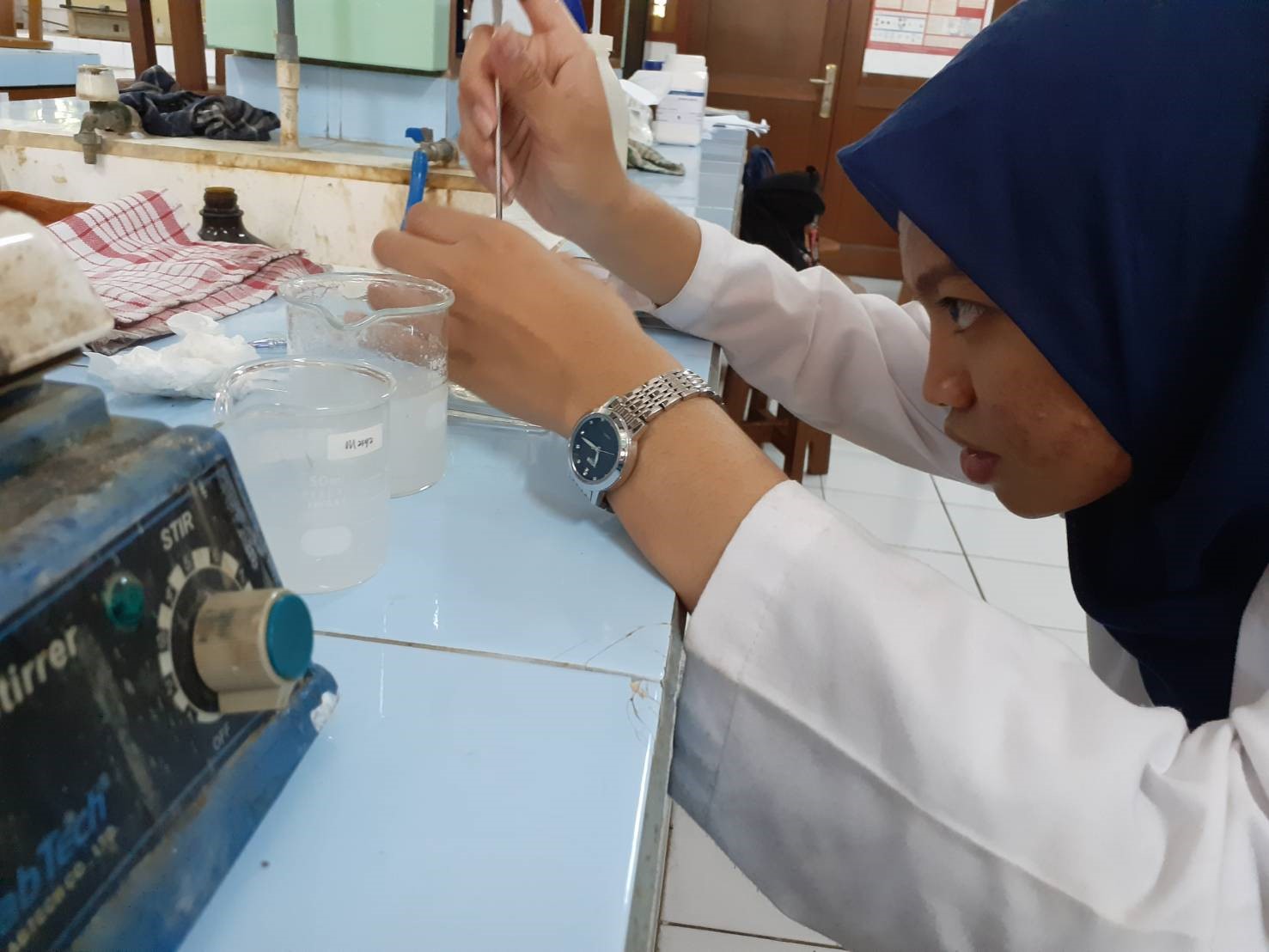UNAIR NEWS – From year to year, environmental problems have always been a concern, especially the problem of water pollution. Based on the data of the Central Statistics Agency (BPS), around 46 percent of rivers in Indonesia are in a heavily polluted state, 32 percent are moderately polluted, 14 percent are moderately polluted and 8 percent are lightly polluted.
The majority of pollutants commonly disposed of in the environment contain harmful organic compounds. There are also inorganic compounds, especially heavy metals. The presence of these dangerous substances can affect the health of living things around the polluted environment.
From these problems, Dr. rer. nat. Ganden Supriyanto Dipl. EST., M.Sc., together with the Environmental Technology and Sensors Research Group team Universitas Airlangga created a tool using the principle of a degradation technique called Fenton like process. Degradation is a technique of changing or remodeling one hazardous compound, especially organic compounds, into simpler and harmless compounds, carbon dioxide (CO2) and water (H2O).
In the process, the material used is a mixture of graphene oxide and Fe3O4 (magnetite, ed). The mixture of these materials, he continued, when subjected to organic pollutants and added a little hydrogen peroxide, which functions as an initiator, will produce highly reactive hydroxyl radicals (.OH).
“All the harmful organic compounds that are produced as waste can be degraded. So, the advantages of degradation using Fenton like process, it did not recognize the chemical substance is toxic to bacteria or not. This is different from biological processing. Biological degradation is difficult if the waste contains toxic organic substances,” said the IPAL consultant on Tuesday, April 13, 2021.
Ganden said, the material used for graphene oxide is made of organic waste in the environment. For example, rice husks, rice straw, twig and dry leaf waste, sawn timber, corncob, and also pallet waste. As long as the material contains a lot of carbon.
“That waste contains many elements of carbon. Graphene oxide is made of the element carbon. So at the same time we can also take advantage of organic waste which has not been used and even burned. It is not recommended to burn it because it can cause air pollution. Instead of causing air pollution, we better turn it into other useful compounds, for example graphene oxide, “explained the lecturer of Analytical Chemistry and Environmental Chemistry UNAIR.
This research, which has been carried out on a laboratory scale for two to three years, does not take up to 45 minutes to reach the optimum point or condition for degradation. In just 30 minutes, he continued, liquid waste that has been degraded by more than 90 percent can be immediately disposed of in the environment because this process does not produce sediment, so the water produced is clear and does not contain pollutants.
It should be noted that the degradation of organic compounds using conventional Fenton techniques produces ferric hydroxide (Fe (OH) 3 ) precipitation. It can create new problems.
Ganden revealed that a laboratory-scale trial had been carried out with an industrial partner from Pasuruan. The factory produces phenol as waste with a very high concentration of more than 100,000 ppm (parts per million, ed). After the experiment, it was found that the results were very good as 90 percent had been degraded.
Furthermore, trials were also carried out on several textile dye wastes. Like the red color of Rhodamine B, the yellow color of methanyl yellow, or for example, the color substance of the azo compound group. After being tested, the average degradation results obtained were above 90 percent.
Ganden explained that theoretically nothing is lost in the process of using materials. Materials that have been used can continue to be used. This reusable property is from the fact that graphene oxide and Fe3O4 are classified as magnetic compounds and the separation process from the waste solution is very easy.
With this research, Ganden hoped to produce large amounts of graphene oxide and Fe3O4. So that in the future processing will not only be at a laboratory scale but also on an industrial scale. “There are even partners from sugar factory companies who are interested in producing graphene oxide from sugar cane,” he said.
“And later we will also create a waste treatment system which can be marketed in the form of processing packages. So we are not only producing graphene oxide and Fe3O4 but also the system, the IPAL system (Wastewater Treatment Plant, ed), “he concluded.
As the best university in Indonesia, UNAIR supports its human resources to develop research that can contribute to society. (*)
Author: Asthesia Dhea Cantika
Editor : Binti Q. Masruroh





